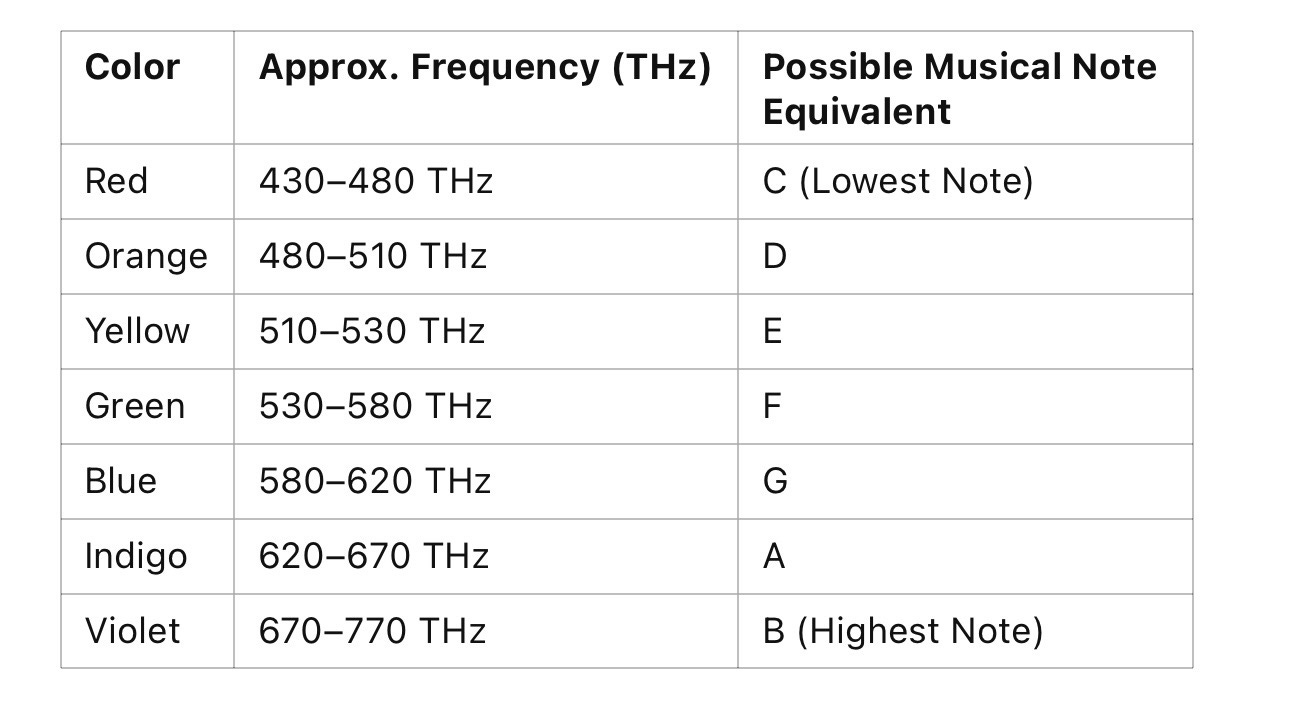Seeing Sound, Hearing Color: The Science and Art of Frequency
Colors and sound frequencies are fundamentally the same in that both are forms of wave energy that operate on different frequencies within the electromagnetic and acoustic spectrums.
While we perceive them through different senses—sight for color and hearing for sound—their underlying nature follows similar principles of vibration, wavelength, and frequency.
The Science Behind Color and Sound Frequencies
1. Wave Properties:
• Sound is a mechanical wave that travels through air or other mediums as vibrations. The frequency of these vibrations determines pitch—low frequencies produce deep sounds (bass), and high frequencies produce high-pitched sounds (treble).
• Color is a form of electromagnetic radiation (light) with different wavelengths. The visible spectrum of light is a small portion of the broader electromagnetic spectrum, just as the audible range of sound is a small portion of all possible sound frequencies.
2. Frequency Comparisons:
• Sound frequencies are measured in Hertz (Hz), referring to the number of vibrations per second. The human ear can detect sounds from about 20 Hz to 20,000 Hz.
• Light frequencies (colors) are much higher, measured in terahertz (THz)—one trillion cycles per second. The visible spectrum ranges from approximately 430 THz (red) to 770 THz (violet).
3. Octaves and Harmonics:
• In music, an octave occurs when a frequency doubles, creating harmonic relationships.
• Light waves can be mathematically scaled to match sound waves, meaning that colors can theoretically correspond to musical notes based on frequency ratios.
The Connection Between Colors and Musical Notes
Some theories and artistic interpretations attempt to map colors to musical notes based on frequency relationships:
This is a rough approximation, as light and sound exist on vastly different frequency scales, but the relationships show that both follow harmonic patterns.
Synesthesia: The Blending of Sound and Color
Some people experience synesthesia, a neurological condition where stimulation of one sense involuntarily triggers another. For example, chromesthesia causes individuals to “see” colors when they hear music. Certain sounds or musical notes might appear as specific colors, reinforcing the deep connection between auditory and visual perception.
Philosophical and Artistic Interpretations
• Many artists and composers, such as Kandinsky and Scriabin, explored the connection between sound and color.
• Modern digital tools can convert audio to visual waveforms or create visualizations based on musical input.
• Electronic music and visual art often intersect through colorized sound waves, demonstrating that frequency is a universal language of vibration.
Conclusion
Color and sound may seem different because our senses interpret them separately, but both follow the same fundamental rules of vibration and frequency. They are two expressions of the same underlying reality—wavelengths of energy that create emotional and sensory experiences. Whether in music, painting, or other forms of creative expression, they remain interconnected, forming a universal harmony that we can both hear and see.


